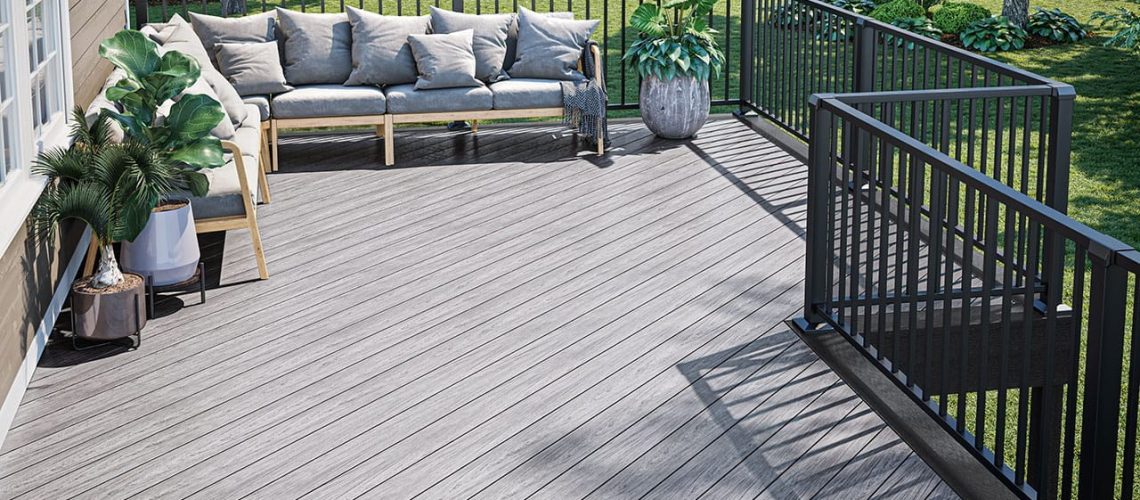Decks are popular outdoor spaces that enhance the aesthetics and functionality of a home. However, when not properly maintained or constructed, decks can pose serious safety hazards. Home inspectors, armed with a keen eye for potential dangers, play a crucial role in identifying unsafe decking issues that could compromise the well-being of homeowners and their guests. In this comprehensive guide, we will delve into the most common unsafe decking problems that home inspectors frequently uncover, emphasizing the critical importance of addressing these issues for a secure and enjoyable outdoor space.
1. Structural Instability
Issue: Weak or Compromised Deck Structure
One of the most significant safety concerns identified by home inspectors is structural instability in decks. This can result from issues such as inadequate support, substandard materials, or poor construction practices.
Why It Matters:
Structurally compromised decks are at risk of collapse, leading to severe injuries and property damage. Homeowners should promptly address any signs of weakness, such as sagging or swaying, to ensure the structural integrity of the deck.
2. Rotted or Deteriorated Wood
Issue: Wood Decay Due to Moisture or Insects
Home inspectors often discover rotting or deteriorating wood in decks, primarily caused by prolonged exposure to moisture or infestations by insects like termites. This compromises the strength of the materials.
Why It Matters:
Rotted or weakened wood reduces the load-bearing capacity of the deck, increasing the risk of failure. Replacing damaged wood components and implementing moisture control measures are crucial for maintaining the structural soundness of the deck.
3. Loose or Missing Fasteners
Issue: Insecure Fastenings Compromising Deck Stability
Home inspectors frequently identify decks with loose or missing fasteners, such as screws, bolts, or nails. Inadequate fastening compromises the structural connections, leading to an unstable deck.
Why It Matters:
Insecure fasteners can result in deck components separating or collapsing. Ensuring all fasteners are secure and in good condition is essential for preventing accidents and maintaining the overall stability of the deck.
4. Inadequate Ledger Attachment
Issue: Improper Attachment of Deck Ledger to the House
Improper ledger attachment is a common safety concern discovered by home inspectors. If not securely attached to the house, the ledger board can lead to deck instability and potential collapse.
Why It Matters:
Inadequate ledger attachment is a leading cause of deck failures. Ensuring a secure connection to the house structure is critical for the overall stability and safety of the deck.
5. Insufficient Guardrails and Balusters
Issue: Lack of or Inadequate Guardrails and Balusters
Home inspectors often identify decks with missing or insufficient guardrails and balusters. These safety features are crucial for preventing falls and ensuring the well-being of deck users.
Why It Matters:
Inadequate guardrails and balusters increase the risk of falls from elevated decks. Ensuring that these safety features meet local building codes is essential for preventing accidents and injuries.
6. Faulty Stair Construction
Issue: Unsafe Staircases Leading to the Deck
Unsafe stair construction is a frequent concern discovered by home inspectors. Issues may include steep stairs, uneven risers or treads, or wobbly handrails, all of which increase the risk of accidents.
Why It Matters:
Unsafe stairs pose a significant fall hazard, especially for individuals navigating to and from the deck. Ensuring that stairs adhere to proper dimensions and safety standards is crucial for preventing injuries.
7. Inadequate Deck Flashing
Issue: Lack of Proper Flashing to Prevent Water Damage
Home inspectors often find decks without adequate flashing, allowing water to seep into the house structure. This can lead to wood rot, decay, and compromise the overall integrity of the deck.
Why It Matters:
Water damage can weaken the deck structure and compromise its longevity. Installing proper flashing and addressing any water-related issues promptly are essential for preserving the deck’s integrity.
8. Decking Material Issues
Issue: Defective or Unsafe Decking Materials
Home inspectors may identify issues with the decking materials themselves, such as poor quality, substandard installation, or the use of materials not suitable for outdoor applications.
Why It Matters:
Defective or unsafe decking materials can lead to premature deterioration, compromising the structural integrity of the deck. Ensuring the use of high-quality, weather-resistant materials is crucial for the longevity and safety of the deck.
9. Overloading and Weight Capacity Issues
Issue: Exceeding the Deck’s Weight Capacity
Home inspectors often discover instances where decks are overloaded with excessive weight, whether from large gatherings of people or heavy furniture. Overloading can lead to structural stress and failure.
Why It Matters:
Exceeding the weight capacity can cause the deck to collapse, resulting in injuries and property damage. Adhering to the specified weight limits and regularly inspecting for signs of stress are essential for preventing accidents.
10. Lack of Regular Maintenance
Issue: Neglecting Routine Deck Maintenance
Home inspectors frequently find decks that have not undergone routine maintenance. Neglecting tasks such as cleaning, sealing, and inspecting for damage can lead to safety hazards.
Why It Matters:
Regular maintenance is crucial for identifying and addressing potential issues before they escalate. Neglecting routine care can result in structural problems and compromise the safety of the deck over time.
Conclusion
A well-maintained and properly constructed deck enhances the beauty and functionality of a home’s outdoor space. Home inspectors, through their meticulous examinations, play a critical role in identifying potential safety hazards that could compromise the integrity of the deck and pose risks to occupants. From structural instability to inadequate safety features, addressing these common unsafe decking issues is paramount for ensuring a secure and enjoyable outdoor environment. In the realm of homeownership, proactive measures, regular inspections, and prompt maintenance are key to mitigating the risks associated with unsafe decks and creating a space that can be safely enjoyed for years to come.
To learn more about the most common safety issues discovered by home inspectors, check out our article “Safeguarding Homes: Common Safety Issues Uncovered by Home Inspectors“.


